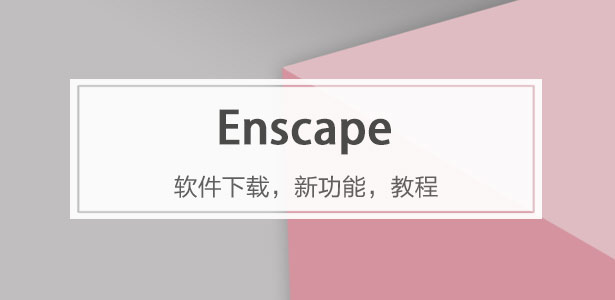
下載app免費領(lǐng)取會員





項目名稱 上海國慶寺
設(shè)計單位? 深圳墨泰建筑設(shè)計與咨詢有限公司
項目地點? 上海浦東
建成時間? 2024年
撰文? 沈馳
上海國慶寺十年的設(shè)計和建造是神圣理想與世俗精神共創(chuàng)的過程,這種共創(chuàng)或主動,或被動,或在建筑設(shè)計的計劃內(nèi),或又改變了建筑設(shè)計的初衷。
The design and construction process of Shanghai Guoqing Temple over the last decade have been a process of co-creation between sacred? ideals and secular spirits. This co-creation has been sometimes proactive, sometimes passive. Sometimes it was within the plan of architectural design, sometimes it changed the original design intentions.
2014年底,我接到朋友的電話,被邀請設(shè)計一座寺廟的方案。寺廟不大,有位年輕的住持,法號演因。我在電話里跟他說:“如果您要個傳統(tǒng)仿古寺廟,我不適合做,如果您想做個現(xiàn)代寺廟,我很有興趣。”演因法師說:“我很期待!”于是我們便開始了合作。
In late 2014, I received a phone call from a friend inviting me to design a scheme for a temple. The temple was not large, and there was a young Master with the Dharma name of Yanyin. I told him on the phone, "If you want to build a traditional antiquity-style temple, I would not be suitable. If you want to build a modern one, I would be very interested in designing!" Master Yanyin said, "I look forward to it!" Therefore, our collaboration began.


項目位于上海浦東唐鎮(zhèn)中心區(qū)域,一邊臨河,兩邊臨路,用地旁有一塊城市綠地。原址曾有一座明代寺廟,為紀念明代抗倭名將俞大猷的“俞公祠”。
The project is located in the central area of Tang Town, Pudong District of Shanghai. It bordered by a river on one side and roads on two sides, with an urban green space adjacent to the site. In the plot, there used be the Yu Gong Temple, which was built for commemorating Yu Dayou, a famous anti-invasion warrior in the Ming Dynasty.
當代宗教建筑是個很有意思的設(shè)計題目,我們心目中的這座寺廟的設(shè)計應(yīng)體現(xiàn)中國性、禪宗氣質(zhì)和當代精神,并與城市友好。
The design of contemporary religious architectures is a very interesting topic. In our minds, the design of this temple should, while being friendly to the city, embody Chinese characteristics, Zen temperament, and contemporary spirit.

中國性
Chinese Characteristics
“儒釋道”是中國傳統(tǒng)文化的三大源流,其中的“釋”即指佛教,中國的寺廟無法繞開對中國性的回應(yīng)。
Confucianism, Buddhism, and Taoism are the three main sources of traditional Chinese culture. Chinese temples cannot avoid responding to Chinese characteristics.
我們對中國建筑的理解,是立足以“空間關(guān)系”為先,而非“物”為先。中國傳統(tǒng)建筑多為一進一進的院落格局,相比西方傳統(tǒng)建筑對宏偉之物的追求,中國則更關(guān)注建筑與建筑之間“空”的部分。即使用地緊張,這座寺廟也不應(yīng)該是一座集中的大建筑,而應(yīng)該是群組建筑,尊重漢傳佛教基本格局,創(chuàng)造更多建筑之間的小環(huán)境。建筑間有庭院、天井和縫隙,這些戶外空間尺度控制的很小,產(chǎn)生一種屏蔽效應(yīng),讓寺院內(nèi)基本看不到周圍城市的高層住宅,讓在城市環(huán)抱下的寺院呈現(xiàn) “幽、隱、靜、藏”的氣氛!
Our understanding of Chinese architectures is based on giving priority to "spatial relations" rather than "objects". Traditional Chinese architectures are mostly composed of a series of courtyards. Different from the pursuit of grand scale in Western traditional architectures, China pays more attention to the "empty" parts among buildings. Even when the site area is limited, the temple should not be a single large building but a group of buildings, respecting the basic pattern of Han Buddhism while creating more small space among buildings. There are courtyards, patios, and gaps among buildings. These outdoor spaces are controlled to a small scale, producing a shielding effect that makes it basically impossible to see the surrounding urban high-rise residences while staying in the temple. Therefore, it creates an atmosphere of "seclusion, concealment, quietness, and isolation " for the temple while it was surrounded by urban architectures.




佛殿建筑舒展的屋頂,是在呼應(yīng)中國建筑的水平伸展的線條。為了這種水平型,地上僅布置佛殿和僧人們居住的場所,最大化減少地上建筑體量。佛堂、圖書館、餐廳、禪修房、停車庫等因此被安排在地下,并結(jié)合一周的下沉庭院,讓半地下空間獲得自然通風(fēng)和采光。
The stretching roof of the Buddhist hall echoes the horizontal stretching lines of Chinese architectures. To achieve this horizontal form, we have to minimize the above-ground building volume. So only the main Buddhist hall and the living space for monks are constructed on the ground. Many space, such as the Buddha room, library, canteen, meditation rooms, parking garage, etc., are arranged below the ground. These underground space are design combined with a sunken courtyard around the perimeter, so as to make the semi-underground spaces to obtain natural ventilation and daylight.


禪宗氣質(zhì)
Zen Temperament
這是一座禪宗寺院,禪宗之美,在于簡素,直指人心,見性成佛。
This is a Zen temple, and the beauty of Zen lies in simplicity, directly influencing the human minds, and seeing nature to achieve Buddhahood.
我們使用了木模板的清水混凝土作為主要材料,用厚重樸素的材質(zhì)呈現(xiàn)禪宗的精神。住持感受到清水混凝土墻的韻味,給它們起了個富有禪意的名字——融素。
Fair-faced concrete with wooden formwork is the main material. It presents the spirit of Zen with a thick and simple texture. Abbot Yanyin felt the charm of the fair-faced concrete walls and gave them a Zen-like name - "Rongsu" (Blended Simplicity).




厚墻的建筑間,不時有窄縫和洞口,讓不大的空間有著豐富的層次;大雄寶殿前,一片靜水面,大殿倒影其中;鈦鋅板的屋檐上,漸變式的小孔由虛變實,過濾著自然光;大雄寶殿的頂部,散開的孔洞讓光斑灑落在大殿內(nèi)……空間種種,創(chuàng)造出一種“幽明”的氣氛,讓人忘卻塵世的紛繁,在一片精神所在進入佛法的世界。
Among the thick-walled buildings, there are narrow slits and openings, which giving the small space rich layers; in front of the Mahavira Hall, there is a calm water surface reflecting the hall; on the titanium-zinc roof, gradient small holes filtering natural light; the scattered holes on the roof of the Mahavira Hall, allow light spots to appear in the hall... Various spaces create an atmosphere of "dimness and brightness", allowing people to forget the hustle and bustle of the world and enter the world of Dharma.




當代精神
Contemporary Spirit
所謂當代建筑,一方面,在于空間、材料等建筑本體的設(shè)計。寺廟本身其實沒有絕對的式樣,漢傳佛教把宮廷建筑的格局移植到寺廟中(“寺”在過去指官衙),所以我們有了與藏傳、南傳、日式等不同的中軸對稱官衙式寺廟,并在歷朝歷代不斷演變。
On the one hand, the so-called contemporary architectures lies in the design of the architectural noumenon, such as space and materials. In fact, there is no absolute style for temples. Han Buddhism transplanted the pattern of imperial palace architecture into temples ("temple" used to refer to Yamun, a kind of government agency), so we have central-axis symmetrical Yamun-style temples, which are different from Tibetan, Theravada, and Japanese Buddhist architectures. Temple architecture has been evolving through the dynasties.
我們認為,今天的佛寺應(yīng)該與時俱進,呈現(xiàn)當代的建筑技術(shù)和空間理念,在熟悉與陌生之間體現(xiàn)傳承與創(chuàng)新。設(shè)計通過建筑的開合處理、庭院尺度的控制,去除了裝腔作勢的形態(tài)。建筑平和樸素,用現(xiàn)代的語言塑造傳統(tǒng)韻味和空間精神。
We believe that today's Buddhist temples should keep pace with the times, presenting contemporary architectural technologies and spatial concepts, reflecting inheritance and innovation between familiarity and unfamiliarity. With careful arrangement of the architectural fragmentation and combination, and the control of the courtyard dimensions, the architectures are peaceful and simple with relaxed and natural space. Our design uses modern techniques to create traditional charm and space spirit.



當代精神的另一方面在于建筑與城市的關(guān)系。在我們心目中,寺廟也是城市里的文化場所,應(yīng)體現(xiàn)一定的公共屬性。我們通過與政府協(xié)商,把寺廟的朝向轉(zhuǎn)至與小綠地連通的方向,寺廟可以封閉,城市公園開放,兩者一并設(shè)計,連接共享。我們因此還給寺廟和公園取了個共同的名字——眾生禪院。
On the other hand, the contemporary spirit lies in the relations between the building and the city. In our minds, the temple is also a cultural place in the city and should reflect a certain public attribute. Through communication with the government, we changed the orientation of the temple to make it better connects to the small green space. The temple can be isolated, but the urban park is open, with the two sites connected and designed together, both of them could be better. We gave the temple and the park a common name - " The Zen Park of All Living Beings".







寺廟建設(shè)至今已歷經(jīng)十年,命運多舛。
The construction of the temple has last for ten years, and its process has been full of ups and downs.
西南面的城市綠地與寺廟的銜接方式多次溝通變動,我們設(shè)計的一組景觀構(gòu)筑物最終被大幅簡化,讓主建筑群失去了配角,寺廟與城市公園聯(lián)通的開放格局沒能完全實現(xiàn);大殿周圍的配套用房在建設(shè)過程中被加高了層數(shù),讓主殿從側(cè)面街道無法被看見;大雄寶殿頂部的光孔被取消了大半;一些材料在實施中因種種原因呈現(xiàn)的質(zhì)量不一致等等。
The connection between the urban green space in the southwest and the temple has been changed many times. A group of structures we designed in the garden was greatly simplified at last, making the main building complex lose its supporting role. Therefore, the open layout connecting the temple and the urban park was not fully realized. The floors of associated rooms around the main hall were increased during the construction process, making the main hall invisible from the side streets. Many light holes on the roof of the Mahavira Hall were canceled. The quality of some materials were inconsistently during construction process due to various reasons, and so on.





土建完工后,景觀、室內(nèi)、陳設(shè)因為資金問題和自由捐贈問題進入了失控狀態(tài)。寺廟的很多裝修和擺設(shè)都來自信眾的自由捐贈,以至于佛像、欄桿、門、許多陳設(shè)的風(fēng)格代表著不同捐贈者的喜好……寺廟已成為一座眾人共創(chuàng)的建筑。
After the main construction was completed, the landscape, interior, and furnishings entered an out-of-control state due to financial problems and free donations. Many decorations and furnishings in the temple came from the free donations of believers, so that the styles of many furnishings, such as Buddha statues, railings, and doors, represent the preferences of different donors. The temple had become a building co-created by many people.
建設(shè)的資金大都來自捐贈,有一點做一點。在西方,基督教堂可以建造幾百年,比如170多年建造的圣加大教堂、600多年建造的米蘭大教堂;在東方,日本禪師升也俊明把造園當作修行,日復(fù)一日。
Since most of the construction funds came from donations, we did what we could with the limited funds. In the West, Christian churches could be built for hundreds of years, such as the Sagrada Família built for more than 170 years and the Milan Cathedral built for more than 600 years; in the East, Japanese Zen master Shoye Junmyo regards garden construction as a practice day after day.
上海國慶寺歷經(jīng)十年,其實還有很多地方未完成,也不知何時能完全呈現(xiàn)。但建筑早已投入使用,演因法師在建設(shè)過程中就已入住,一步步參與寺廟的建設(shè)。當建筑師面對項目不可知的未來,接受了神圣理想與世俗現(xiàn)實的共存,做設(shè)計也是一種修行。
After ten years of construction, Shanghai Guoqing Temple still has many unfinished parts. It is unclear when it will be fully presented, though it has already been put into use. Master Yanyin moved in during the construction process and participated in the construction of the temple step by step. Achitects accepted the coexistence of sacred ideals and secular reality when facing the unpredictable future of a project. Doing design is also a kind of practice itself!
多年前,一個友人看到這座廟的設(shè)計方案,提筆贈予詩句:“靈心自覺鬧市說禪語,江山懷遠大隱聞?wù)頋保饩撑c我們的設(shè)計思考很貼切。若干年后,項目落成,希望未能辜負初心。
Many years ago, a friend saw the design scheme of this temple and wrote a poem: "The spiritual heart consciously speaks Zen words in the busy city, and the great hermit hears the sound of the waves with the ambition of the country." The artistic conception is very close to our design concept. when the project is completed after several years, we hope we have lived up to our original intention!

設(shè)計圖紙 ▽





完整項目信息
項目名稱:上海浦東國慶寺
項目地點:上海市浦東新區(qū)唐鎮(zhèn)
設(shè)計時間:2014年—2016年
建成時間:2024年
業(yè)主:上海國慶寺
設(shè)計單位:深圳墨泰建筑設(shè)計與咨詢有限公司
設(shè)計范圍:建筑方案、施工圖全程設(shè)計(含室內(nèi)設(shè)計)
主持建筑師:沈馳
建筑:王淞、馮文清、劉為霞、朱維、劉余勇、伍玉聰、楊靜、陳靜兒、羅瓊、王春燕、葛鐵昶
結(jié)構(gòu):岑慧園、黃明星、陳惠明、甘凱、朱安安
電氣:孫健有、呂珍地、李峰、潘志堅、高陽
給排水:李和、黃杰、溫志軍、李玲玲、張志華
暖通:彭天輝、代小山、張子星、唐麗華
室內(nèi):阮斌、唐韻珊、胡俊波、程翔、黃利波
無設(shè)建筑
景觀:上海苗龍景觀工程有限公司
攝影:TAL
獎項和榮譽:2024香港建筑師學(xué)會海峽兩岸暨港澳建筑設(shè)計大獎銀獎、第14屆國際空間設(shè)計大獎艾特獎全球五強、2016深圳建筑創(chuàng)作獎金獎
版權(quán)聲明:本文由深圳墨泰建筑設(shè)計與咨詢有限公司授權(quán)發(fā)布。歡迎轉(zhuǎn)發(fā),禁止以有方編輯版本轉(zhuǎn)載。
投稿郵箱:media@archiposition.com
本文版權(quán)歸腿腿教學(xué)網(wǎng)及原創(chuàng)作者所有,未經(jīng)授權(quán),謝絕轉(zhuǎn)載。

上一篇:BIM建筑|深圳人才公園(二期):水泥板上的森林海 / AUBE歐博設(shè)計
下一篇:[db:標題]












推薦專題
- BIM建筑|KPF中標深化方案:深圳后海“地王”,T107-0107地塊住宅項目
- BIM建筑|“AI與設(shè)計”第四講:AI擴散工具驅(qū)動設(shè)計全流程的融合變革|直播預(yù)約
- BIM建筑|線上首播︱孟建民、范悅、徐衛(wèi)國、丁寧、齊奕、呂帥,共話“AI與設(shè)計”之潛力
- BIM建筑|2025深圳灣超級總部基地最新進展,40+張圖看現(xiàn)場|有方影像
- BIM建筑|拉薩八廓街加卡夏古院更新 / hyperSity architects殊至建筑
- BIM建筑|墨泰新作:當決定用混凝土造一座寺廟|設(shè)計手記
- BIM建筑|深圳人才公園(二期):水泥板上的森林海 / AUBE歐博設(shè)計
- BIM建筑|佛山東風(fēng)村集體廚房改造 / 象城建筑
- BIM建筑|地方工作室作品:江華瑤族水口鎮(zhèn)如意村,文化服務(wù)中心及特色工坊
- BIM建筑|福斯特事務(wù)所,贏得伊麗莎白二世女王紀念所競賽
































